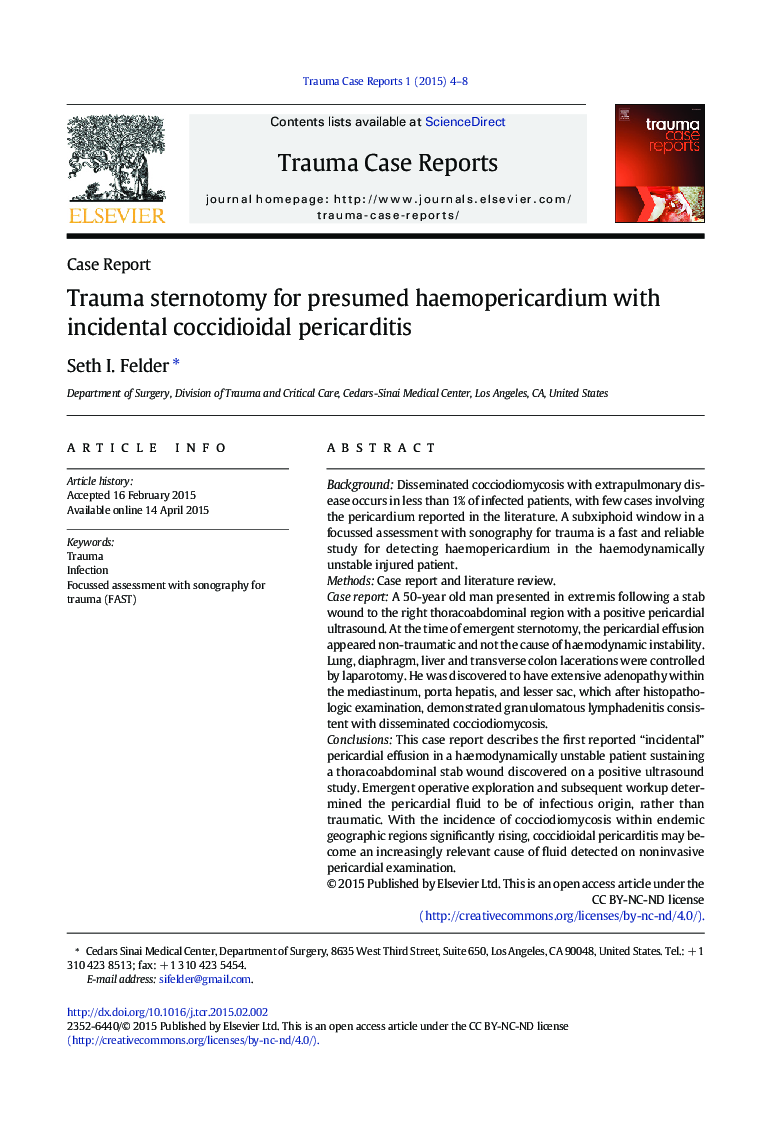| Article ID | Journal | Published Year | Pages | File Type |
|---|---|---|---|---|
| 4100531 | Trauma Case Reports | 2015 | 5 Pages |
BackgroundDisseminated cocciodiomycosis with extrapulmonary disease occurs in less than 1% of infected patients, with few cases involving the pericardium reported in the literature. A subxiphoid window in a focussed assessment with sonography for trauma is a fast and reliable study for detecting haemopericardium in the haemodynamically unstable injured patient.MethodsCase report and literature review.Case reportA 50-year old man presented in extremis following a stab wound to the right thoracoabdominal region with a positive pericardial ultrasound. At the time of emergent sternotomy, the pericardial effusion appeared non-traumatic and not the cause of haemodynamic instability. Lung, diaphragm, liver and transverse colon lacerations were controlled by laparotomy. He was discovered to have extensive adenopathy within the mediastinum, porta hepatis, and lesser sac, which after histopathologic examination, demonstrated granulomatous lymphadenitis consistent with disseminated cocciodiomycosis.ConclusionsThis case report describes the first reported “incidental” pericardial effusion in a haemodynamically unstable patient sustaining a thoracoabdominal stab wound discovered on a positive ultrasound study. Emergent operative exploration and subsequent workup determined the pericardial fluid to be of infectious origin, rather than traumatic. With the incidence of cocciodiomycosis within endemic geographic regions significantly rising, coccidioidal pericarditis may become an increasingly relevant cause of fluid detected on noninvasive pericardial examination.
